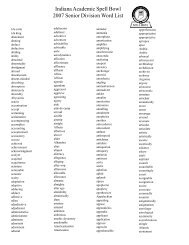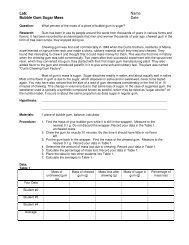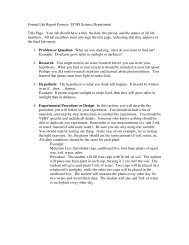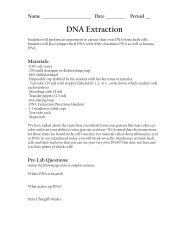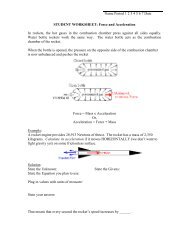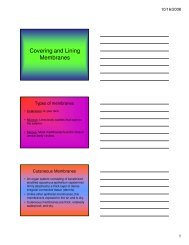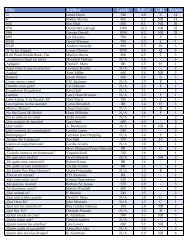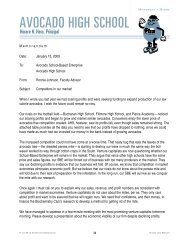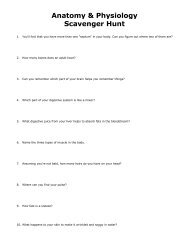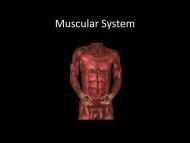Active Insufficiency Passive Insufficiency Muscle tension = contraction
Active Insufficiency Passive Insufficiency Muscle tension = contraction
Active Insufficiency Passive Insufficiency Muscle tension = contraction
You also want an ePaper? Increase the reach of your titles
YUMPU automatically turns print PDFs into web optimized ePapers that Google loves.
10/13/2008<br />
<strong>Active</strong> <strong>Insufficiency</strong><br />
2 joint muscles cannot exert enough<br />
<strong>tension</strong> to shorten enough to allow full<br />
ROM in both joints at the same time.<br />
<strong>Passive</strong> <strong>Insufficiency</strong><br />
2 joint muscles cannot be stretched<br />
enough to allow full ROM in both<br />
joints at the same time.<br />
<strong>Muscle</strong> <strong>tension</strong> =<br />
<strong>contraction</strong><br />
Segment moves = dynamic <strong>tension</strong> or dynamic<br />
<strong>contraction</strong><br />
Segment does not move = static <strong>tension</strong> or static<br />
<strong>contraction</strong><br />
1
10/13/2008<br />
Functions of Muscular Contractions<br />
• Concentric Tension<br />
• Eccentric Tension<br />
• Isometric Tension<br />
Concentric Tension<br />
• To act as a motive force to move a body part<br />
• Type of dynamic <strong>tension</strong><br />
• “moving towards the center”<br />
• Movements caused by the muscle<br />
hamstrings flex the knee<br />
elbow extensors used during a push-up<br />
Eccentric Tension<br />
• To act as a resistive force to resist the<br />
movement of a body part<br />
• Type of dynamic <strong>tension</strong><br />
• Lengthening <strong>tension</strong> of a muscle group<br />
• “away from the center”<br />
• Control speed and direction of movement<br />
caused by another force (gravity or other<br />
muscle’s force)<br />
2
10/13/2008<br />
Isometric Tension<br />
• To act to stabilize or fixate a body part<br />
• Type of static <strong>tension</strong><br />
• There is muscle <strong>tension</strong>, but no movement<br />
• Resists force from other muscle or outside<br />
source<br />
3



